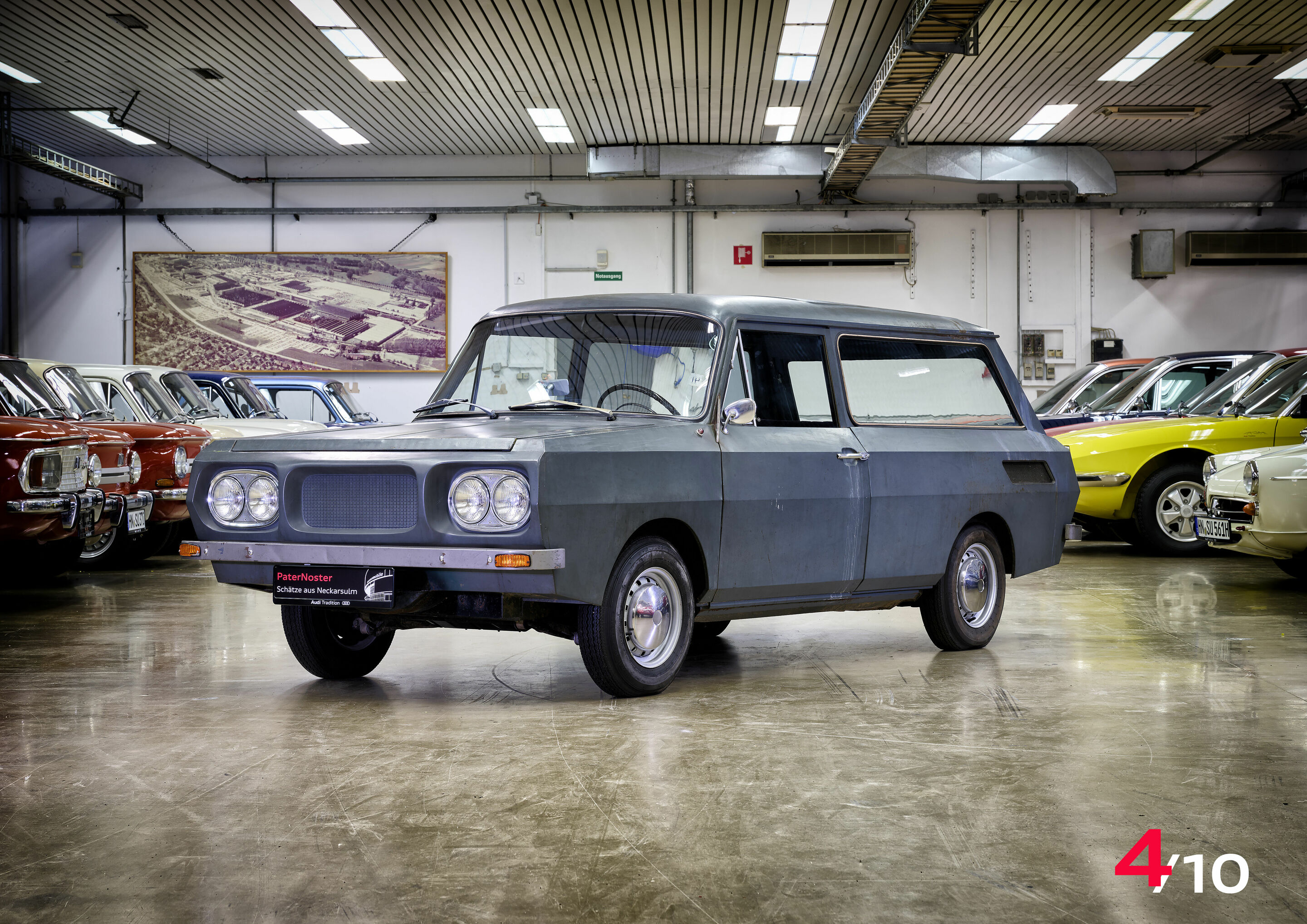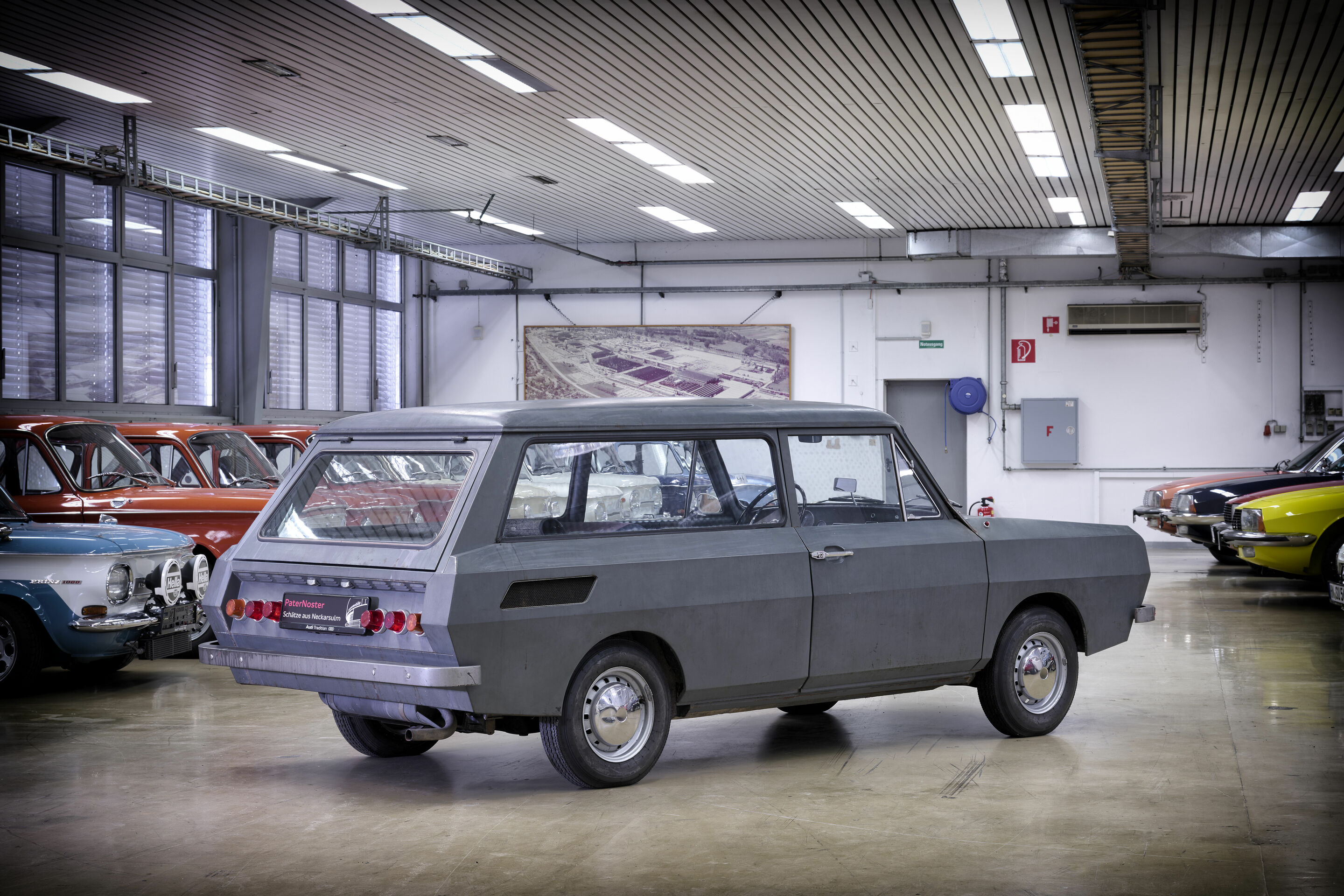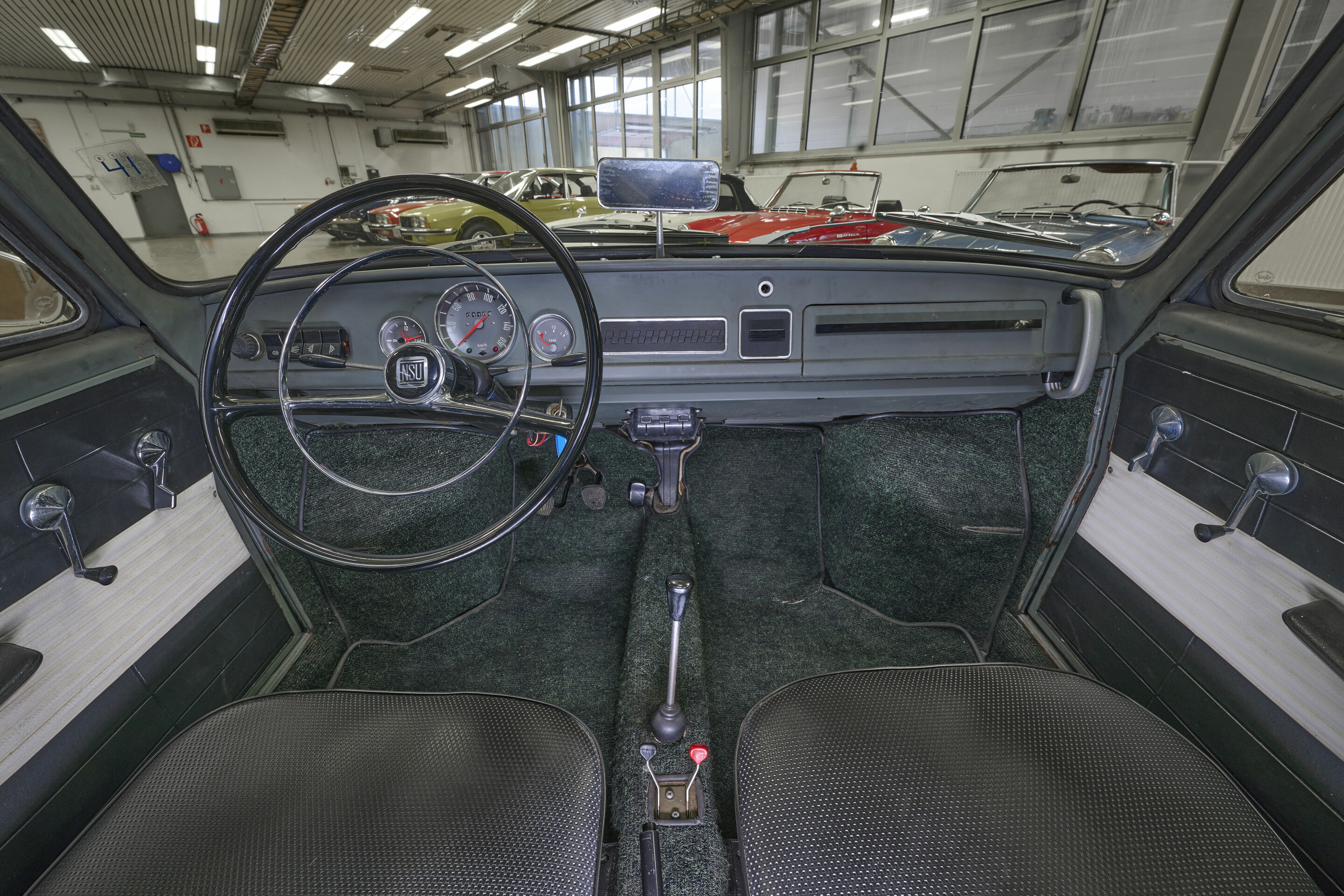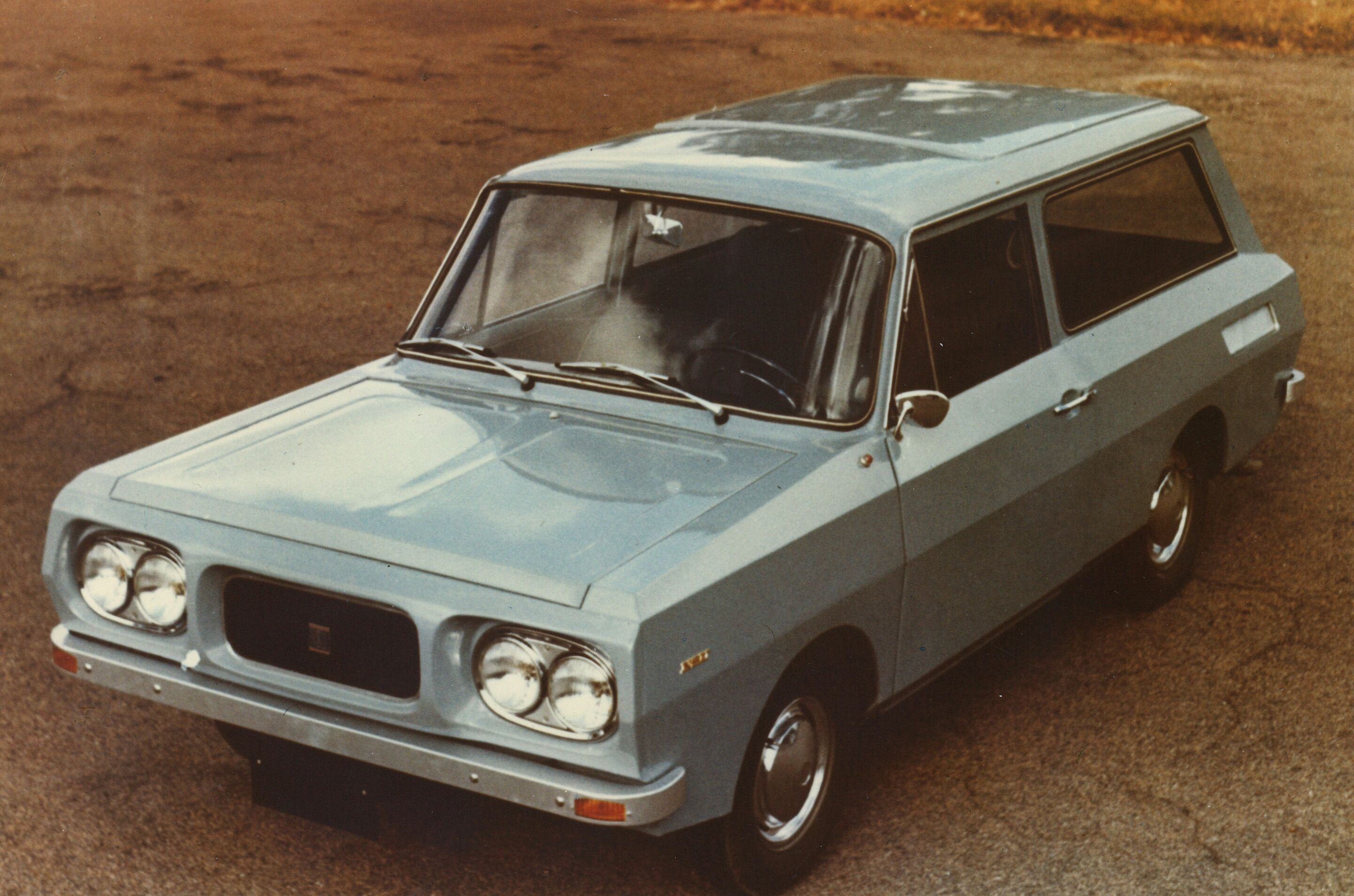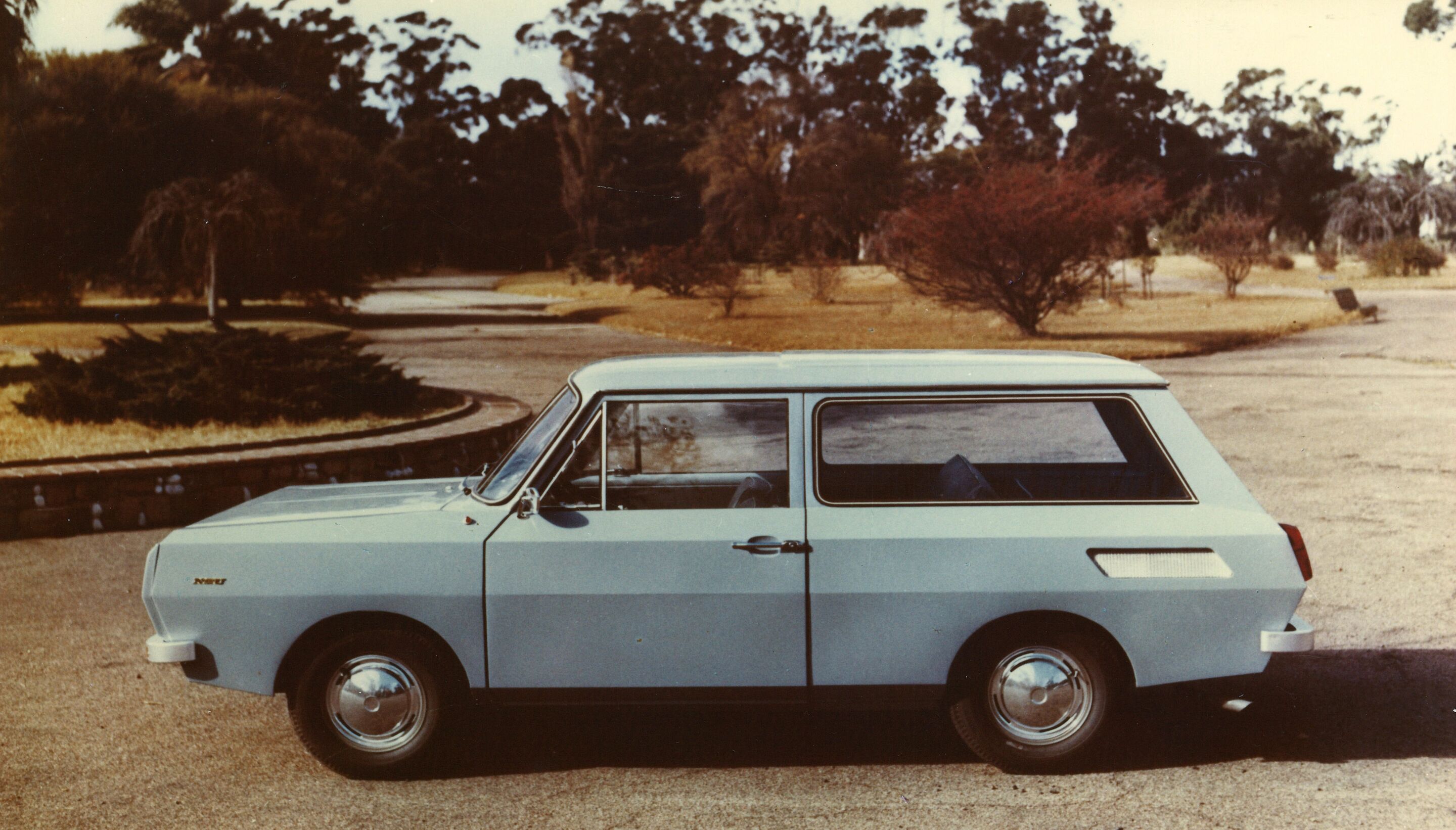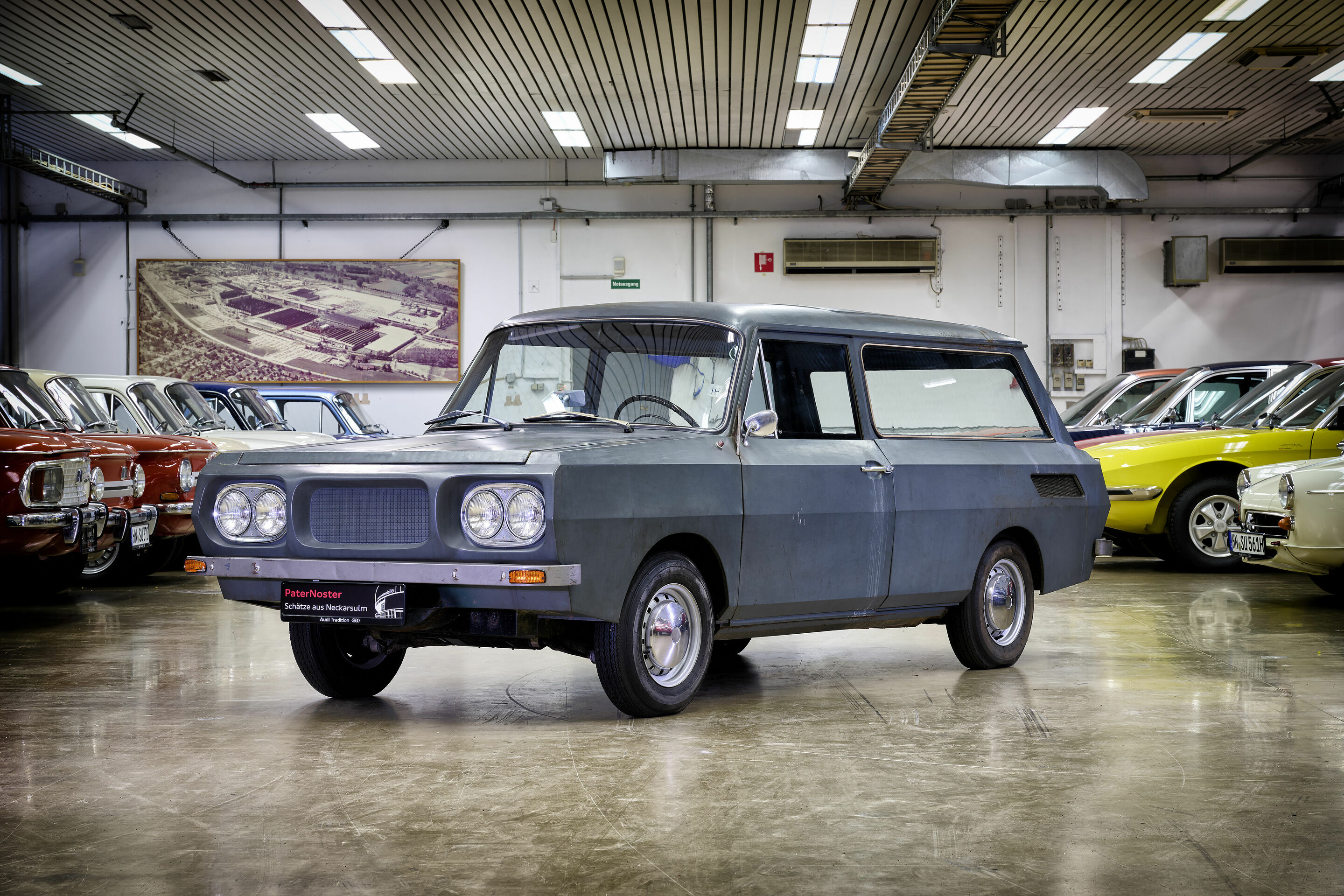A boxy model: the NSU “Uruguay”
- South American NSU importer produced around 500 station wagons between 1969 and 1971 based on the NSU Prinz 1000
- 150 years of the traditional brand NSU: Series with classics and one-of-a-kinds from NSU’s model history – Episode 4
The NSU “Uruguay” is undoubtedly an exotic member of the NSU family. That’s what the Neckarsulm locals colloquially called the rustic station wagon back in the day. Between 1969 and 1971, the NSU importer in Montevideo produced around 500 units of the somewhat angular car in P6 and P10 versions. Audi Tradition introduces the NSU Uruguay in this fourth episode of the anniversary series on NSU history.
It’s a boxy model – as if drawn with a ruler. The NSU Uruguay in no way fits into the design language of NSU’s automobiles in the late 1960s. Here’s how it happened. The NSU importer in Uruguay called Quintanar began producing and selling a station wagon in 1968, essentially on its own authority, using technical subassemblies from the two-cylinder NSU Prinz 4. By the end of that year, the company had sold 140 units. But the importer wanted more, especially a more powerful engine for the wagon – preferably a four-cylinder. A meeting was held at the Neckarsulm plant in May 1969 to clarify whether this was feasible. For this meeting, a “naked” sample body was shipped to Neckarsulm by air, which the NSU engineers used to build a prototype. In the end, the four-cylinder engine of the NSU Prinz 1000 wouldn’t fit into the engine compartment without major modifications – but it could fit into the back of the car. The Quintanar representatives seemed unfazed by losing considerable cargo space in the process, nor were they put off by a longer list of issues from the Neckarsulm Technical Development department. The inspection authorities in Darmstadt rated the NSU station wagon positively overall, apart from a few “easy-to-fix complaints” and gave it the green light. And so, between 1969 and 1971, around 500 station wagons rolled off the assembly line in South America in P6 and P10 model variants. In 1971, NSU withdrew from the Uruguay market – which also sealed the fate of the “Uruguay”. Today, the prototype of the NSU P10 – the first and only one of its kind ever to drive on German roads – is part of AUDI AG’s collection of historical vehicles. It’s undeniably one of the collection’s most extraordinary, angular, and distinctive models.
| Technical specifications for the NSU “Uruguay” P10 (1969 prototype) in AUDI AG’s collection of historical vehicles | |
|---|---|
| Engine: | Air-cooled four-cylinder four-stroke in-line engine |
| Performance: | 43 hp at 5,000 rpm |
| Engine displacement: | 996 cubic centimeters |
| Top speed: | 120 km/h |
| Fuel consumption: | 6.5-7.5 liters/100 km |
| Production period: | 1969-1971 |
| Overall production: | Circa 500 units (NSU P6 and NSU P10) |
Each month until December, Audi Tradition is presenting a different NSU model, including brand classics on both two and four wheels, prototypes, and one-of-a-kind models. If you want to learn a few more details about this special vehicle or see a few more pictures of it, we recommend a book by Ralf Friese and Stefan Warter: “Einblicke. Die Fahrzeugsammlung der AUDI AG” (Insights: The Vehicle Collection of AUDI AG), first edition, Delius Klasing Verlag, Bielefeld. It’s available in bookstores, in the Ingolstadt museum shop, at the Audi Forum in Neckarsulm, and in the Audi Tradition online shop at www.audi.de/tradition-parts.
